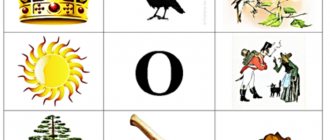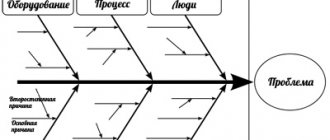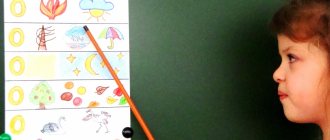Classification of questions
The technique for developing critical thinking “Bloom's Cube” is unique in that it allows you to formulate questions of a very different nature.
- Name it . Involves the reproduction of knowledge. These are the simplest questions. The student is asked to simply name an object, phenomenon, term, etc.
For example, “Name the main characters of the poem by A.S. Pushkin "Eugene Onegin". Or “Name three signs of the similarity of triangles”, “What is a definite integral?”
This block can be diversified with variable tasks that help test the most general knowledge on the topic. For example, using Bloom's Cube in English lessons, you can include text knowledge tasks in the “Name it” block.
Example: Invite students to read the text and fill out the Yes-No table for the text.
- Why . This block of questions allows you to formulate cause-and-effect relationships, that is, describe the processes that occur with a specified object or phenomenon.
For example: Why was Peter the Great nicknamed the Great? Why do you classify Pechorin as “superfluous people”? Why is mathematics called the “queen of sciences”? Why did dinosaurs become extinct? Etc.
- Explain . These are clarifying questions. They help to see the problem from different aspects and focus attention on all sides of a given problem.
Additional phrases that will help formulate questions in this block:
- Do you really think that...
- Are you sure that...
For example: Do you really think that the reforms of Peter I were necessary? Are you sure that in all cases the letter “I” is written after the letter “C”?
- Suggest . The student must propose his own task, which allows him to apply this or that rule. Or offer your vision of the problem, your ideas. That is, the student must explain how to use this or that knowledge in practice to solve specific situations.
For example: Suggest where and how the D.I. table can be used. Mendeleev? Why might you need to know the rules of rhyme?
- Come up with - these are creative questions that contain an element of assumption and fiction.
For example: Think about what would happen if all sources of fresh water disappeared on Earth. Come up with rhymes for this word (in English, Russian language or literature lessons). Can you imagine how this law would be used today?
- Share - the questions in this block are designed to activate the mental activity of students, teach them to analyze, highlight facts and consequences, evaluate the significance of the information received, and focus on their evaluation.
It is advisable to add an emotional coloring to the questions in this block. That is, to concentrate attention on the student’s sensations and feelings, his emotions that are caused by the named topic.
For example, Share how you feel when you hear Mozart’s music? Or Why did you choose this particular topic?








